Loopylittleletters.com contains affiliate links. If you make a purchase using one of the links below, we may receive compensation at no extra cost to you. We only recommend products and services we use and trust. Read our disclaimer for more information.
In this post, we’ll address your hesitations on getting started with hand lettering, and get you the tools and the rules to just do it!
How I Got Started
For a long time, the idea of hand lettering was just a thought in my mind. A wish. Something other people could do, but I couldn’t.
Also, I didn’t have time.
And then one day wandering in Target, I found some brush pens and impulsively threw them in my cart. When I got home, I pulled out a sheet of printer paper and wrote something.
It looked just awful. I hated it. I was utterly embarrassed. Unfortunately, I am pretty sure I threw it in the trash. Don’t do that. Always save your beginning works. They will illuminate your progress down the road.
So I Googled how to hand letter. I found a free course and signed up.
And…I was thoroughly annoyed. Because the first thing you do is practice strokes.
Yep- tiny little lines!
I was annoyed because I wanted to go straight into beautiful hand lettering. But I’m quite certain if you look through all the lettering examples on Instagram, you’d be able to pick up on who practiced those beginning strokes, and who didn’t. They are THAT important.
You can’t cross the finish line before you run the race, friends.
I remember in the classroom there was a saying, “Go slow, to go quickly.” You have to lay a great foundation and then you can build upon it anything you want.
5 Steps to Start Hand Lettering
So you want to learn how to letter? Here’s how you begin:
Step 1: Choose your tool
Grab a marker- a thick Crayola marker or something similar. Remember those brush pens I bought at Target before I even knew how to letter? Yeah, they stunk for a beginner. I recommend starting with a plain old marker. They are much easier to handle in the beginning. I used Crayola Supertips and regular Crayola markers.
If you absolutely must have a brush pen (because c’mon, it’s exciting and fun to buy new pens! Careful- it’s also addicting!!) Pentel Touch Pens are what I learned on and I loved them. They are thin brush pens and are a little easier to handle in the beginning. Soft, flexible brush pens are difficult to control until you have more experience.
You can look at your local art store or you can find Pentel Touch Pens here.
You can read more about the tools I recommend in The 5 Best Pens for Hand Lettering.
Step 2: Choose your paper
If you begin with regular markers, your paper isn’t important. As you dive into the world of brush pens, it becomes more important. With brush pens, you need smooth paper so that your brush pens don’t fray. I recommend HP 32 Premium Printer paper.
You can probably find HP 32 Premium Printer paper at your local office supplies store, or you can find it here.
If your paper has lines, all the better! One thing I have always struggled with is getting my letters straight. When I began, I actually printed dot paper to practice on. This was pretty helpful. Here is a link to some free dot templates you can print yourself.
Step 3: Learn the basic strokes
Core rules for hand lettering
Practice the up and down strokes you see here:
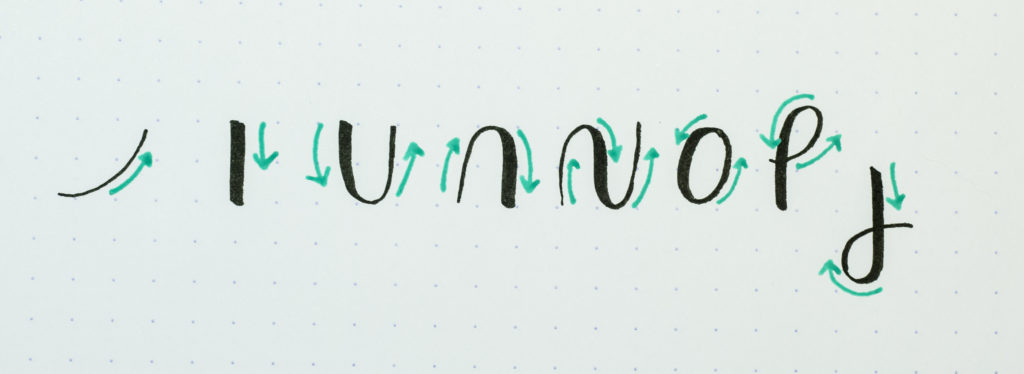
The main thing to remember here, when your pen moves upward, your strokes are thin. As you bring the pen down, use more pressure to create a thick stroke. In some cases you may have to change the angle of your pen- such as when you are using a Crayola marker. Thin up, thick down. Pretty easy to remember!
Would you like a guide? Grab my free basic strokes worksheet. You will find the link at the bottom of this post. You can print it as many times as you need, or you can use tracing paper over it.
Your best bet for tracing paper is to shop your local art store, or you can find a few different kinds at Walmart.
Prefer to shop online? I had good luck with this tracing paper. It arrived pretty unwrinkled.
Step 4: Practice letters and words
Set aside a little time each day to practice, even five minutes! It won’t be long before you see the difference in your own hand lettering skills! And save your work. One day, as you are comparing your work to someone else’s, pull out your beginning pieces and see how far you’ve come! In the beginning, I kept a binder full of my work. I still keep some pieces. But now I just take a photo of each one and post it on Instagram. That’s my portfolio of all my work. You could also just take a picture and save it to Google Drive.
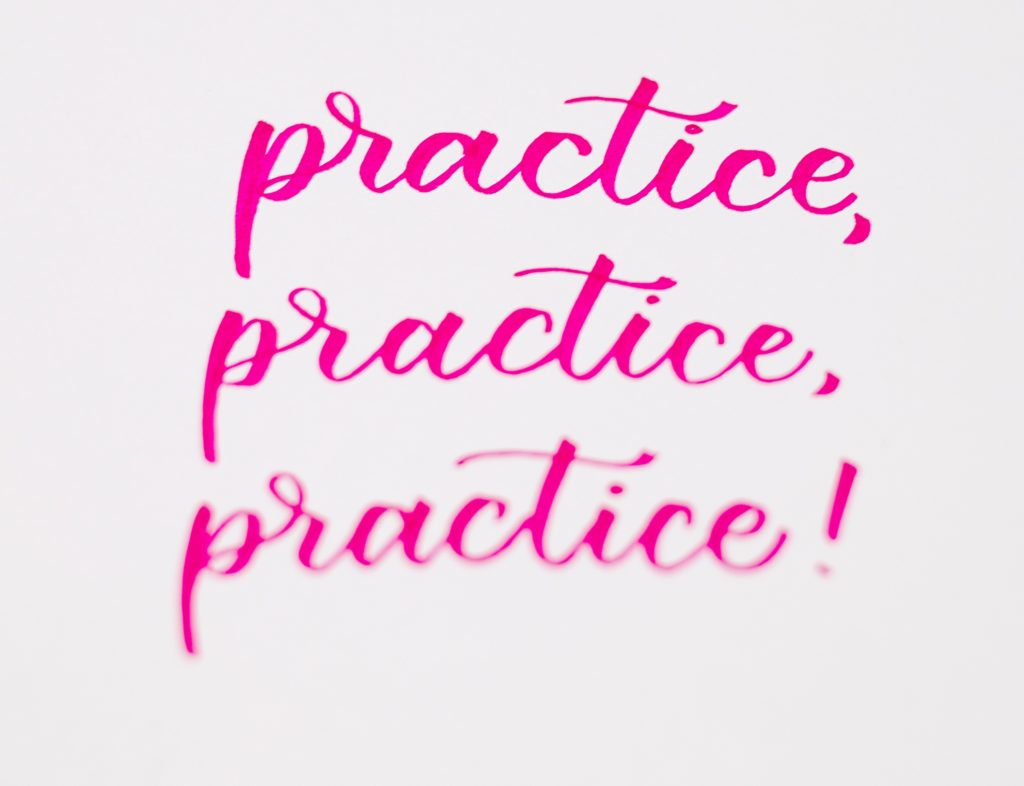
Step 5: Collect Inspiration
Inspiration is everywhere! Pinterest, Google, Etsy….wherever you search you will find it! And you can use other peoples’ work to spur your own creativity.
However, proceed with caution. When you are searching for inspiration around the web and you see all the beautiful hand lettering out there, keep in mind that those lettering artists all had to start at the beginning, too.
Inspiration can come from other places, too. Sometimes I am inspired to add a caption to a cute picture, letter a favorite verse from a song, letter funny things my kids say, Bible verses, movie quotes, you get the idea!
Here’s a peek at my beginning lettering for you:
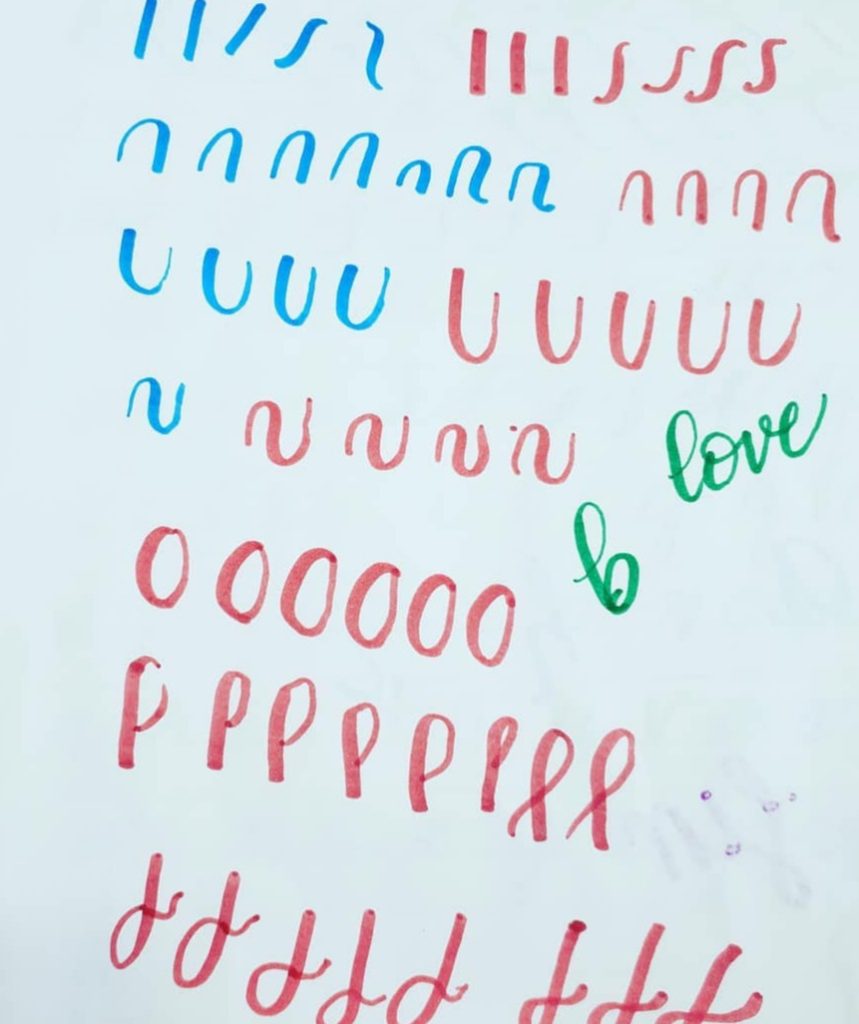
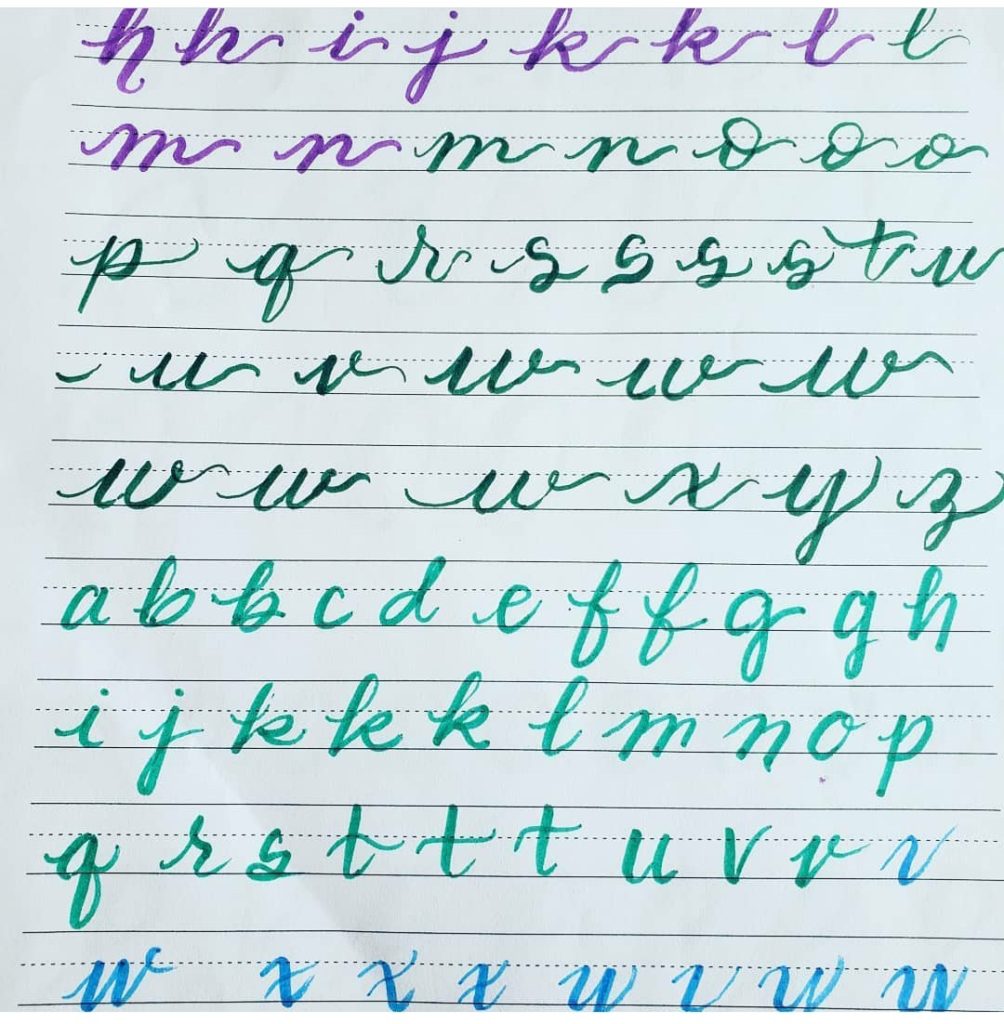
Bonus Step: What is Faux Calligraphy?
When you are getting started in hand lettering, you can also try something called faux calligraphy. While the writing style isn’t the same, the end result will appear to be calligraphy. The way to do this is to simply write your word, and then go back to the downstrokes and thicken them with your writing tool. Hand lettering artists will often do this on product pieces when they can’t use a brush pen. But it’s another great way to practice!
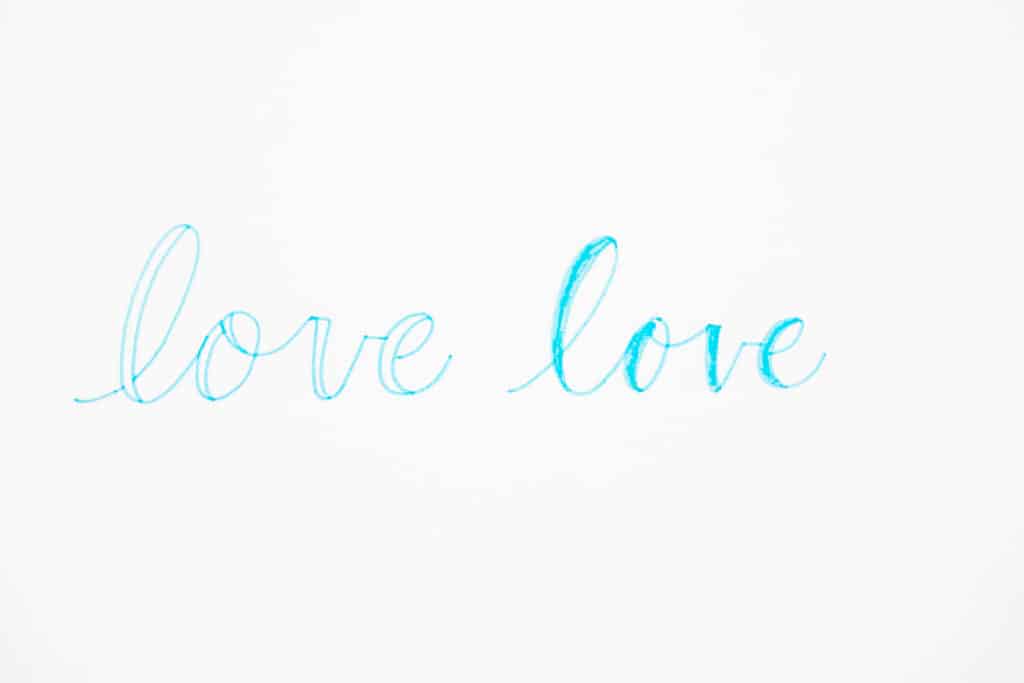
I love hand lettering and am so grateful that I started! And as a side note- I was 40 years old when I got started. You can start any time! With a little practice every day, getting started in hand lettering is quite simple and you will see quick results with the tips you’ve read about today!
